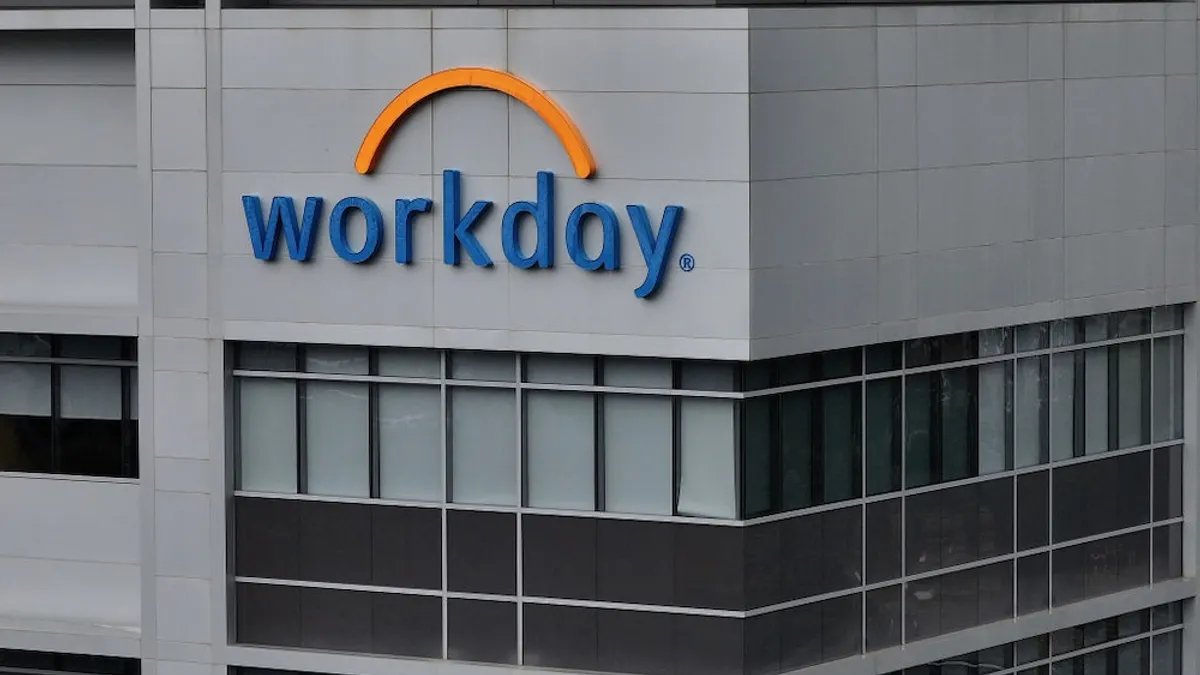This feature is part of a series focused exclusively on employee engagement. To view other posts in the series, check out the spotlight page.
It’s hard to make a business successful without employees to work for it.
Ask any manager in the hospitality industry about the biggest demons their business faces, and it’s likely they’ll all cite a similar one: retention. Usually followed closely by profitability.
As HR managers everywhere are painfully aware, the two go hand-in-hand like bad news and sad weather. Even for industries with notoriously high benefits offerings, keeping young talent around for longer than a year is a consistent budgeting challenge. Despite studies showing that millennial attitudes aren’t wholly to blame for the problem, poor engagement still plagues companies of all types.
The “new blue-collar” industries, such as foodservice and hospitality, grapple with these problems on even bigger scales — but that has led to some serious innovation in the space that could inform how these industries improve engagement and retention overall.
New technology is enabling employers to communicate with employees faster and more reliably and develop innovative twists on older tactics, like offering free education to employees through online courses and coaches.
For engagement to kick in, employers have to meet employee needs in ways that resonate. Here’s how some companies are trying to do that.
Making good HR policy matter
In the companies that are doing this right, HR has already moved from the sidelines to the forefront of the business, Luke Fryer, Founder of Harri, an online-enabled hospitality talent platform, told HR Dive.
The reasons are two-fold. States that continue to push wage law increases have spooked industry leaders, who consider the potential costs “crippling” to their business, Fryer said. HR is being called upon to manage talent pipelines in a more sustainable way. Instead of being seen as a cost sink, HR is “mission critical” to profit generation.
But hospitality businesses also struggle against powerful competitors and perceptions that they are a low-paid industry. In some states, those competitors include marijuana businesses. As one Bloomberg story succinctly put it: “Why work in a stressful kitchen when you can make $22 an hour in a greenhouse?”
HR has to maximize the performance of the talent they still have, with little funding left over to execute improvement plans. For many businesses, that means looking internally to find ways to efficiently shore up holes in the pipeline — and there are few better ways to do that than through internal development.
“Sustained ROI is in retention,” Rachel Carlson, CEO and co-founder of Guild Education, told HR Dive. Her company provides education solutions to employers as a benefit to add to their offerings. “There’s a sizeable number of frontline employees who need help going back to school who don’t have meaningful higher-ed credentials.”
It’s not about just helping employees obtain a degree. It’s also about getting them to stick around long enough to either recoup the costs of originally hiring and training them or promote them into management. The “commoditization” of the low wage job — essentially, that you can find one just about anywhere — makes it paramount that employers find a way to engage employees and differentiate themselves from the pack.
Communicating with employees how they want
To speak to employees, you have to know where they are getting their information. In many cases, the easy assumption (mobile phones or email) isn’t the correct one. Mobile devices are ubiquitous among all generations, but not all employees want to be communicated with on their personal device, Fryer said. And most hospitality employees don't use email in significant numbers.
“If you want to ignore them and overrule the way they want to work, they are just going to go work somewhere else,” Fryer said. “If you don’t respect the way they want to be communicated with, you do so at your own peril — as in you won’t open for lunch.”
To get around this, Harri communicates with employees when they clock in — a moment all employees go through when they start their shifts. Employees clock in through an iPad with an app that has face recognition technology.
The messages have to be kept short, but it’s one way to keep in touch with the employee base and remind them of important events, such as benefits enrollment.
Respecting the ways employees want to be communicated with matters in the long run. An apropos adage might be, "an employee for now is a customer for life."
Training them in a way they can access
That adage applies to benefits perhaps most of all. Carlson is part of a movement to make education an element of commonly offered benefits programs, even to hourly workers — a shift in perspective on a benefit most commonly associated with white-collar work.
For many white-collar programs, however, education benefits tended toward negative ROI with little impact on retention. In programs aimed at blue-collar workers, retention needs to be at the forefront of design. But that means reworking education benefits from simply a degree-funding program to one that allows development to be guided by what the employee needs.
These educational opportunities blend custom degree programs with specific, job-applicable skills training. That way, employees aren’t bogged down by a nebulous degree or too-specific skill development.
“At the front-line, it is a retention crisis. But for finding managers, it is a skills shortage,” Carlson said. Learning programs akin to Guild Education provide specialized skills training that gives employees credentials they can carry to all jobs and give employers a workforce that is both more present and more promotable.
Essentially: You are training your own workforce to fill your talent gaps, encouraging them to stick around in the process.
A good experience at a company includes a vision for how to grow while there, and that includes providing appropriate horizontal and vertical pathways — even if that leads to the employee leaving the company later on.
It’s all about resiliency
Hospitality, retail and other blue-collar industries are on the verge of powerful change, thanks to a ballooning patchwork mess of state regulation and transformative technology that could eliminate chunks of the workforce through automation.
“The economic incentive to replace people with machines against increasing wage rates is not a soft decision. It is an existential decision," Fryer said.
But workers with leadership potential and strong soft skills will always be needed, which is why talent pipelines need to ensure engagement and retention are top priorities. Communicate with employees. Let them see the paths they can take to develop their own skills.
“They have to decide they want to spend on these benefits,” Carlson said of employers. “Understand the ROI. Know that it can be a profit center.”
The new blue-collar industries are resilient. But they will only remain that way if they change their perspective on the hourly workforce. Making choices based on retention and valuing employees, even knowing they likely won’t stick with you forever, will ensure a company has a fair shake at surviving in a world of new regulation and strange new competition.




















